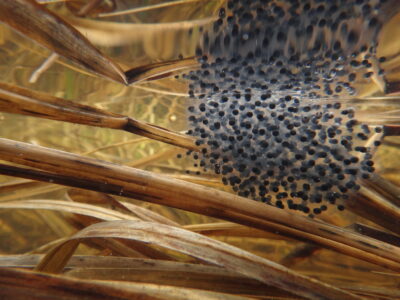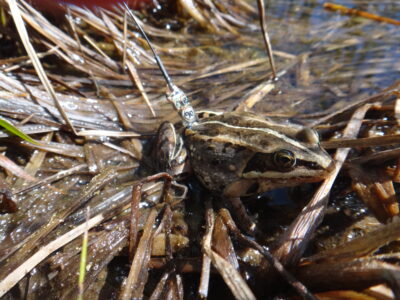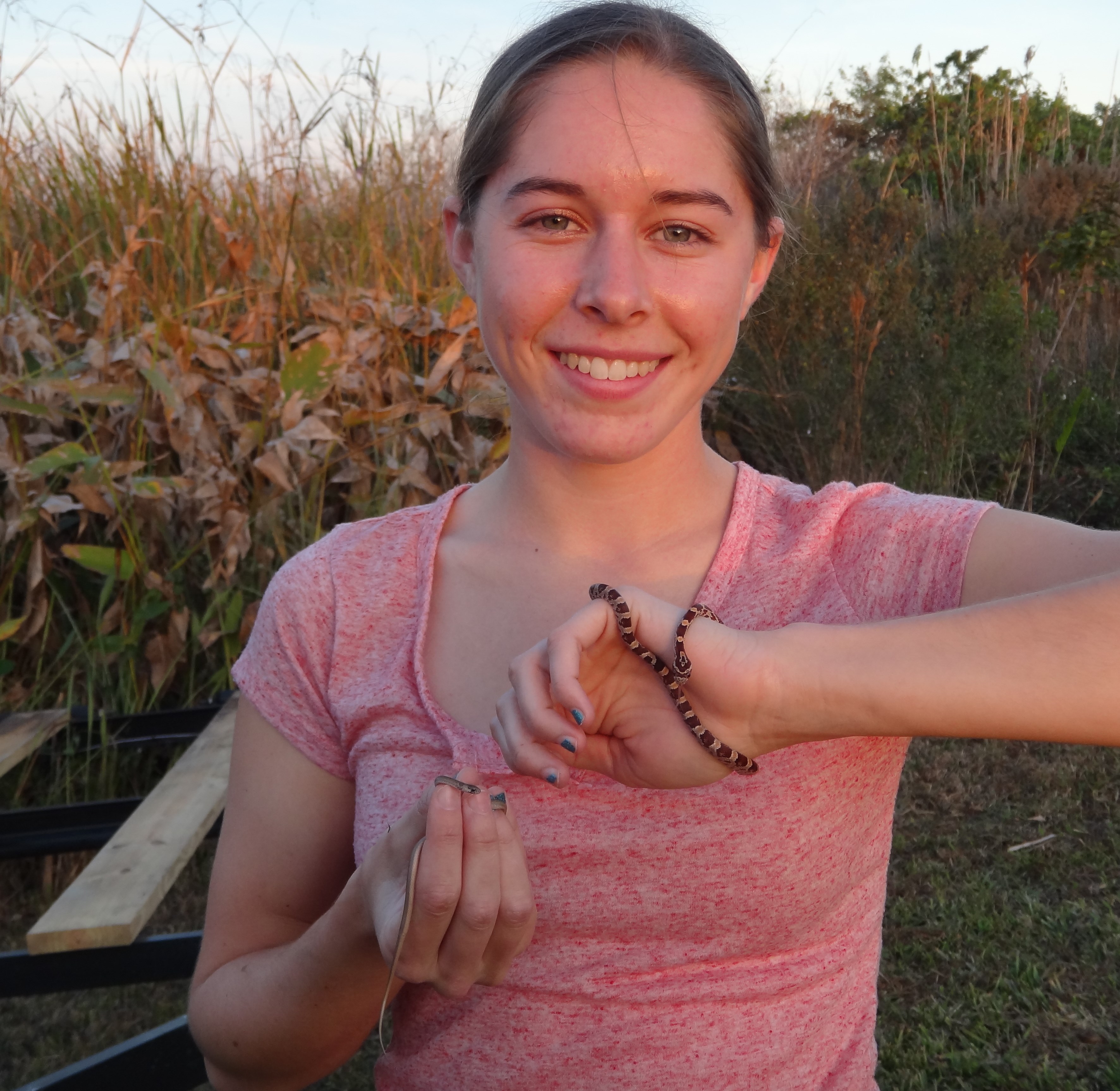The wood frog (Lithobates sylvaticus) is a glacial relict species in Wyoming, found only within the Snowy and Bighorn Mountains. The Wyoming Game & Fish Department has listed the wood frog as a Species of Greatest Conservation Need, with a Native Species Status Rank of 2 in the 2017 State Wildlife Action Plan. The ranking reflects a general lack of information about the habitat needs of wood frogs, coupled with the potential genetic isolation. Another critical gap in knowledge for this population is the prevalence and influence of the chytrid fungus which has contributed to global amphibian declines.
We conducted radio telemetry of adult wood frogs in the Snowy Mountains from breeding sites to hibernacula in 2020 and 2021 to quantify habitat selection at two spatial (pond and microsite) scales, and across the breeding, summer foraging, and over-wintering stages. Tracked individuals were swabbed several times during each summer to determine their disease status of chytridiomycosis and to investigate how disease influences habitat selection. Macro and micro-habitat characteristics were measured at each frog’s relocation site and at random locations.
We are also addressing the question of whether benthic macroinvertebrate communities can serve as a suitable proxy for the quality of breeding ponds of wood frogs. Aquatic macroinvertebrates were sampled across breeding and non-breeding ponds. Water chemistry and physical characteristics were also measured at each pond. We will identify the top invertebrate, physical, and chemical parameters for predicting wood frog breeding, and then compare the top parameters to each other to determine which one(s) is the best. Our study will provide valuable information about the habitat needs of, and disease threats to, wood frogs in Wyoming, and the efficacy of a novel approach to identifying suitable breeding habitat for amphibian species of concern.


Contact
Katrina Cook
Master’s Student
Wyoming Cooperative Fish & Wildlife Research Unit
Department of Zoology & Physiology
[email protected]
814-506-5274
Project Lead
Katrina Cook joined the Chalfoun lab in the fall of 2019. She is pursuing her master’s degree with research focused on habitat selection and quality of wood frogs (Lithobates sylvaticus) in the Bighorn Mountains of Wyoming. Katrina received her B.S. in Wildlife Conservation at Juniata College in Huntingdon, PA in 2014. During the following 5 years she worked multiple field technician jobs working with reptiles and amphibians across 6 different states, including Wyoming. She has worked with sea turtles, amphibians, and gopher tortoises in Georgia, dunes sagebrush lizards in Texas, invasive reptiles in southern Florida, to statewide amphibian and reptile surveys in Wyoming for the Wyoming Game & Fish Department. Additionally she has 1.5 years of lab experience working for Dr. Lusha Tronstad at the Wyoming Natural Diversity Database at the University of Wyoming working with aquatic invertebrates on a long-term study assessing the effects of the introduced lake trout (Salvelinus namaycush) on lower trophic levels (benthic macroinvertebrates, zooplankton, and phytoplankton) in Yellowstone Lake at Yellowstone National Park. Some of Katrina’s research interests include food web dynamics, aquatic ecosystems, entomology, and herpetology.
Funding & Partners
Wyoming Game and Fish Department



